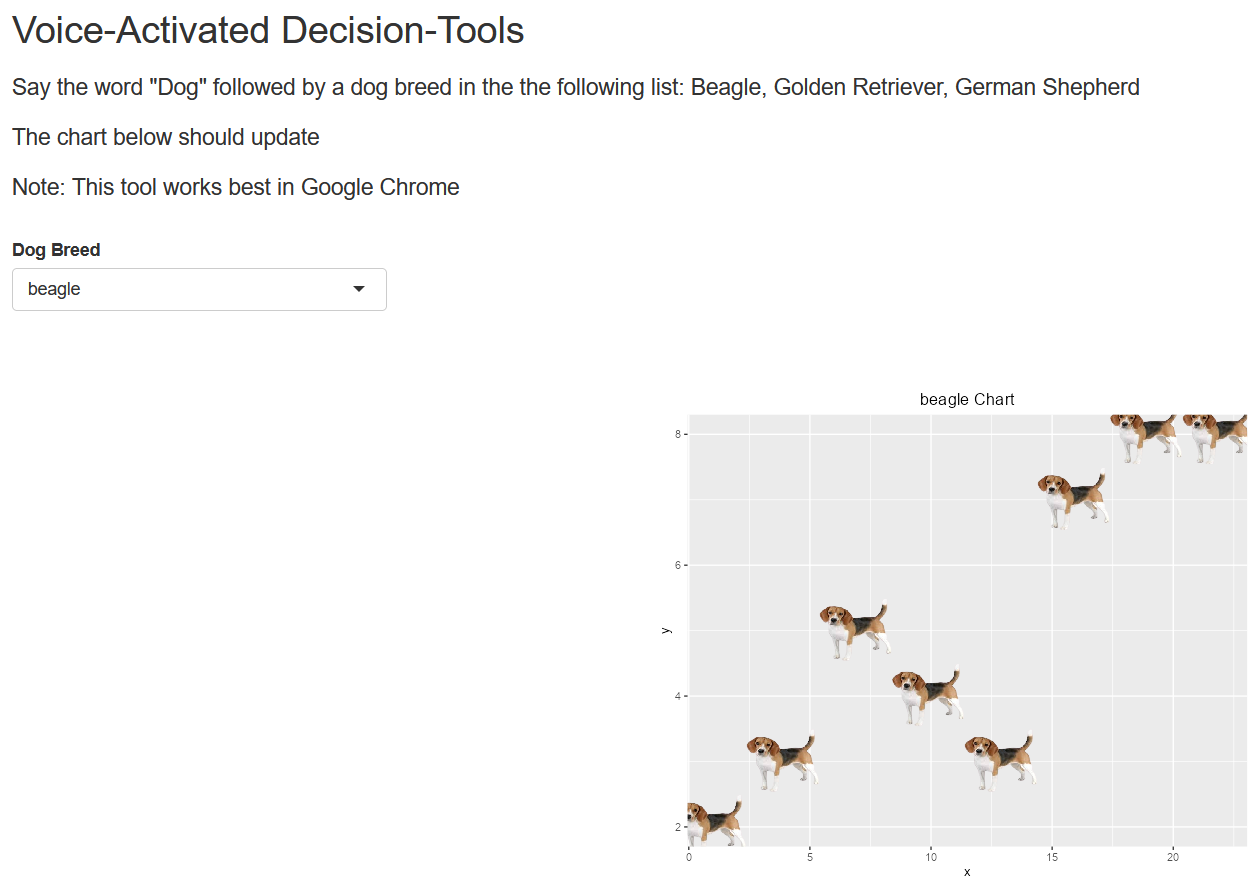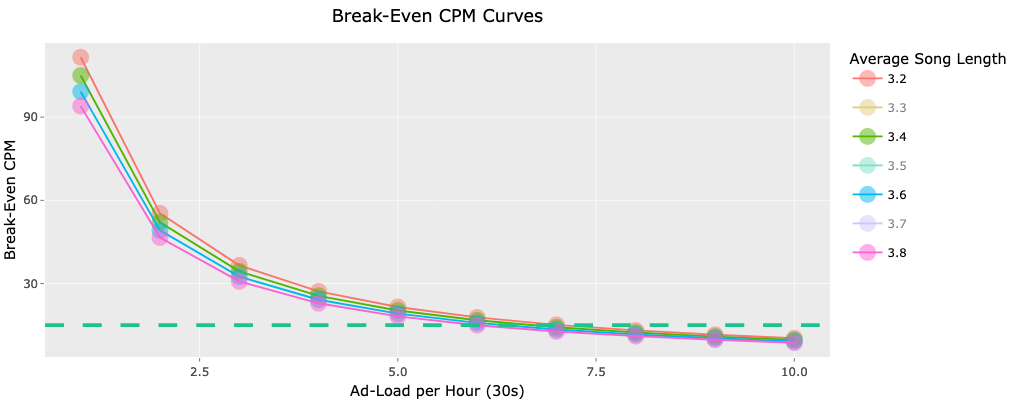Articles
Entertaining your Audience to Encourage Decision-Tool Adoption: An Example with Doggy Data Points
This post showcases a simple demonstration of how entertaining your target audience can drive engagement, using voice activation and amusing images for data points. Interest in using your company’s internal tools unlocks the impact those tools can have. As a bonus, the fun factor also makes the tools more enjoyable to develop.
Productizing Unit Economics
This is the third part of a series covering unit economics and its importance when evaluating business health, diving into a decision-tool to productize unit economics in the streaming music industry. Try out the tool for yourself to explore what conditions make the target company a profitable acquisition.
Applying Unit Economics: Cafe Acquisition
This is the second part of a series covering unit economics and its importance when evaluating business health, diving into an example of acquiring a chain of cafes. This post explores governing equations of profitability, which can be used to evaluate potential turnaround strategies when acquiring a company.
Should You Acquire that Company? It Depends on the Unit Economics
Acquiring or investing in a particular company is an expensive decision, often involving millions or even billions of dollars. But how do you know if a company is worth acquiring? This post explores unit economics, which can serve as a key operational due diligence barometer for private equity, mergers and acquisitions, and venture capital teams.
Implementing a Decision-First Approach
The step-by-step decision-first approach outlined here keeps your team laser-focused on outcomes and how to deliver those outcomes. This way of thinking means that project plans almost write themselves, ensuring each milestone has purpose and value.
Realizing Gains in the Face of Difficult Data: Taking a Decision-First Approach
Many “data-driven” projects fail to deliver tangible results in a reasonable timeline or even at all. Their focus is on data, reporting, or modeling rather than making better decisions that improve a business objective such as profitability. Instead, I advocate a decision-first approach, which is effective in its ability to deliver impact quickly, facilitate cross-functional buy-in, and maintain team alignment.
Overlapping Shifts: Bridging the Gaps Split Shifts Leave Behind
There are many ways to structure your shifts to ensure sufficient headcounts. A popular approach is called split shifts, where the idea is to only schedule staff during busy periods throughout a day. There are several drawbacks to this approach, including lost demand, staff inconvenience, and the complexities of labor laws. This post discusses an alternative that addresses these pitfalls: overlapping shifts.
Restaurant Resilience - the Power of Cross-Training to Weather Uncertain Times
Cross-training is the concept of teaching staff the skills needed to perform multiple jobs. With cross-training, you’re resilient to staff turnover and changes in customer demand. Beyond resilience, cross-trained staff mean more opportunities for hours, improved staff retention, and real-time flexibility.
The Counterintuitive On-Call Staff Scheduling Resulting from Precision Scheduled Railroading
Counterintuitively, PSR requires fixed train schedules but has led to an on-call staffing approach. Wouldn’t we expect fixed, or at least structured, work schedules to support deterministic train timetables?
Create and Deploy your own Optimization API - Part 2
The same underlying question can be answered differently, depending on our primary objective. Sometimes these objectives could even be in conflict with one another. This post describes an approach to address multiple objectives with one codebase that is easily extensible.
Create and Deploy your own Optimization API
You’ve built a mathematical optimization model; now what? What good is it if others can’t use it? How would you make it accessible to users, regardless of their technical acumen? How would you incorporate it into various web and mobile applications across different devices and operating systems? This article will walk you through an open-source, free DIY approach to create and deploy your own optimization API.
Beating Physician Burnout with Algorithmic Scheduling
Physician burnout is a hot topic. However, I have yet to see a tangible solution, so I’m proposing one: improved scheduling practices. Specifically, algorithmic scheduling: using mathematical modeling to generate schedules automatically. My solution is a software platform called SchedJewel.
Shortest Path Algorithms for Functional Environments
This network optimization work is published in the journal “Discrete Optimization.” This research generalizes classic shortest path algorithms to network environments in which arc-costs are governed by functions, rather than fixed weights. Previous results, since Knuth in 1976, require several restrictive assumptions on the functions permitted in the network. In contrast, our algorithms require only monotonicity. We present examples illustrating that this is the largest class of functions to which classic algorithms can be generalized. Applications of this work include critical path extensions to solve sequential decision-problems, and generalized network flow with nonlinear gain functions.












